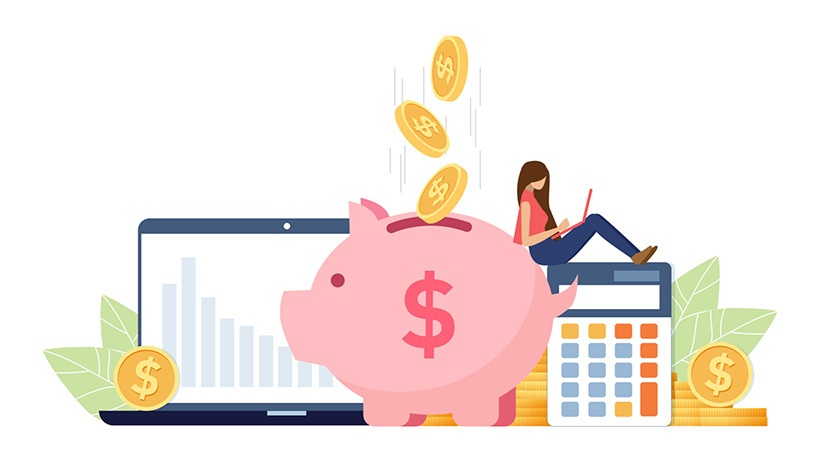Outsource Your eLearning Content Development Without Going Over Budget
The accounting department tends to get a bit nervous when outsourcing vendors enter the picture. It’s more difficult to keep track of expenses when someone else is in control. They naturally assume that the bills will begin to pile up and hidden fees will lurk around every corner. It’s the stuff of a bookkeeper’s nightmares. However, you can avoid all this by creating a realistic budget for eLearning companies outsourcing. This allows you to stretch online training resources, know your financial limitations, and find an eLearning content provider who works within them. Follow these 7 tips to set a budget that’s easy to stick to and improve your online training ROI.

1. Clarify Your Online Training Goals
Numbers and objectives go hand in hand. Clear goals and outcomes allow you to focus on online training topics/tasks that are truly important. As well as re-evaluate your current online training strategy to look for budget-breakers. For example, your online training library is filled with outdated online training resources that still require upkeep. So, pare it down to ensure that every activity aligns with the online training objectives and performance gaps. Your new eLearning outsourcing partner must also be aware of the targeted goals they need to accomplish.
2. Determine The Corporate eLearning Project Scope
How much work is to be done? Do you really need to tackle every item on the to-do list? Every phase of online training development requires a micro-budget. So, prioritize and determine the current corporate eLearning project scope. Keep it as narrow as possible to avoid overspending. But not so narrow that you overlook key elements that might improve your ROI. For instance, you might omit crucial skills or task challenges that will boost employee proficiency. This is a great discussion point for your eLearning vendor meet-and-greet. Speak with them about what you hope to achieve and what your budget can buy. As well as if the outcomes are even feasible based on your time frame and/or monetary resources.
3. Consider Ongoing Maintenance
One of the most overlooked eLearning outsourcing budget items is ongoing upkeep. An eLearning company can develop online training content for your organization, but they require periodic maintenance. For example, your newest compliance simulation calls for updated rules or task steps based on new regulatory guidelines. This is a cost you must factor into your budget. Will the eLearning vendor take care of the revisions? Is there a clause regarding online training content upkeep in the contract? For instance, they cover one refresher per year or charge a specific fee to modify the online training resources they provide. Or does that fall on the shoulders of your L&D team?
4. Inventory Existing Online Training Resources
Outsourcing custom eLearning content development doesn’t always mean starting from scratch. In fact, one of the perks of eLearning companies outsourcing is that they know how to work with what’s on-hand. Be it a recorded presentation from last year or a simulation that fits into the new certification online training course. Inventory your existing online training resources to look for reusable assets that reduce outsourcing costs. The eLearning vendor can either incorporate the online training material into their design or you can simply hire them for modifications/additions. No need to pay twice for online training resources that convey the same takeaways and online training objectives.
5. Factor In Online Training Tools
This is a 2-fold process. Firstly, you must determine if the eLearning vendor has all the eLearning software they need to get the job done. If not, which eLearning authoring tools do they require and do they retain ownership of them when the corporate learning project is complete? Secondly, do you need to invest in any online training tools to update the eLearning content and deploy your online training program? For instance, do you already own an LMS? What about video conferencing tools to host live events? Or rapid eLearning authoring tools to create JIT tie-in online training resources?
6. Calculate In-House Payroll
The eLearning vendor’s payroll is included in your outsourcing costs. However, you must also consider in-house payroll fees. How long will it take for your team to deploy the online training content and monitor employee performance? What about online training content maintenance and gathering employee eLearning feedback? There’s also the issue of developing supplementary online training resources. Such as online training assessments, support online training tools, and internal marketing. Furthermore, how many people do you have to hire internally to fill in the gaps? Will you need to bring an admin or IT expert on board?
7. Account For Implementation Time
The last item on the list is time. As they say, time is money. So, how long will it take you to deploy online training content and train your team? You need to factor in the learning curve for back and front end users. Your L&D staff and employee training participants must familiarize themselves with the online training tools. There’s also the expense of implementing your online training content and making it mobile-friendly if the eLearning vendor hasn’t already done so. And don’t forget seat time. How much time does your staff need to absorb the information and retain it for later use? Finally, will the eLearning vendor meet with your team to show them the ropes? For instance, how to access eLearning templates and make minor adjustments using the new rapid eLearning authoring tools.
Your eLearning outsourcing company budget isn’t etched in stone. There are times when you need to make room for additional expenses. Such as maintenance and unforeseen eLearning content development delays. Which is why you must always leave a buffer so that you don’t have to borrow from other business operations. You should also discuss pricing options with the eLearning content provider. They might be able to reduce their fee if you contract multiple eLearning solutions. For example, hire them to expand your microlearning online training library or update your compliance online training course.
Custom eLearning content development can be fraught with obstacles if you don’t get everything written and clarify your concerns. Download the eBook How To Find The Right eLearning Providers For Your Custom eLearning Content At The Right Price Point to discover all you need to know about custom eLearning content.






